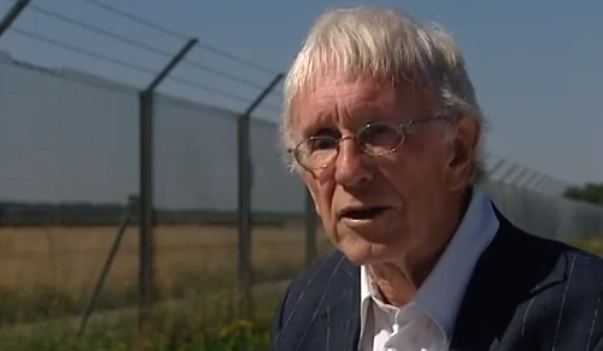B61-12 Nuclear Bomb Triggers Debate in the Netherlands

In a few years, US Air Force C-17 aircraft will begin airlifting new B61-12 nuclear bombs into six air bases in five NATO countries, including Volkel Air Base in the Netherlands (seen above).
By Hans M. Kristensen
The issue of the improved military capabilities of the new B61-12 nuclear bomb entered the Dutch debate today with a news story on KRO Brandpunt (video here) describing NATO’s approval in 2010 of the military characteristics of the weapon.
Dutch approval to introduce the enhanced bomb later this decade is controversial because the Dutch parliament wants the government to work for a withdrawal of nuclear weapons from the Netherlands and Europe. The Dutch government apparently supports a withdrawal.
Bram Stemerdink, who was Dutch defense minister in 1977 and deputy defense minister in 1973-1976 and 1981-1982, said that the Dutch government would have been consulted about the B61-12 capabilities. “Because we have those bombs at the moment. Was the Netherlands therefore consulted, yes,” Stemerdink reportedly said.

Former Dutch defense minister Bram Stemerdink said the Netherlands would have been consulted about the military capabilities of the enhanced B61-12 bomb.
NATO approved the military characteristics of the B61-12 in April 2010, according to the U.S. Government Accountability Office, “including the yield, that it be capable of freefall (rather than parachute-retarded) delivery, its accuracy requirements when used on modern aircraft and that it employ a guided tailkit section, and that it have both midair and ground detonation options.”
Dutch approval is also controversial because the improved military capabilities of the B61-12 compared with the weapons currently deployed in Europe (addition of a guidance tail kit to increase accuracy and provide a standoff capability) contradict the U.S. pledge from 2010 that nuclear weapon life-extension programs “will not…provide for new military capabilities.” The U.S. currently does not have a guided standoff nuclear bomb in its stockpile. The improved military capabilities also contradict NATO’s promise from 2012 to seek to “create the conditions and considering options for further reductions of non-strategic nuclear weapons assigned to NATO…”
Last month Dutch TV disclosed a dispute between the U.S. and Dutch governments over how to discuss potential financial compensation in case of an accident involving U.S. nuclear weapons in the Netherlands.
The B61-12 is currently being designed for production with a price tag of more than $10 billion for approximately 400 bombs – possibly the most expensive U.S. nuclear bomb ever.
Nuclear weapons are unlikely to remain in Europe for long, so instead of wasting more than $10 billion on the controversial enhanced B61-12 for a mission that has expired, the United States should instead do a more basic and cheaper life extension of an existing version. Instead of wasting money on modernizing a nuclear weapon for Europe, the United States should focus its efforts on changing the views of eastern European NATO countries by providing extended deterrence in a form that actually contributes to their security.
This publication was made possible by grants from the New-Land Foundation and Ploughshares Fund. The statements made and views expressed are solely the responsibility of the author.
The Federation of American Scientists applauds the United States for declassifying the number of nuclear warheads in its military stockpile and the number of retired and dismantled warheads.
North Korea may have produced enough fissile material to build up to 90 nuclear warheads.
Secretary Austin’s likely certification of the Sentinel program should be open to public interrogation, and Congress must thoroughly examine whether every requirement is met before allowing the program to continue.
Researchers have many questions about the modernization of Pakistan’s nuclear-capable aircraft and associated air-launched cruise missiles.